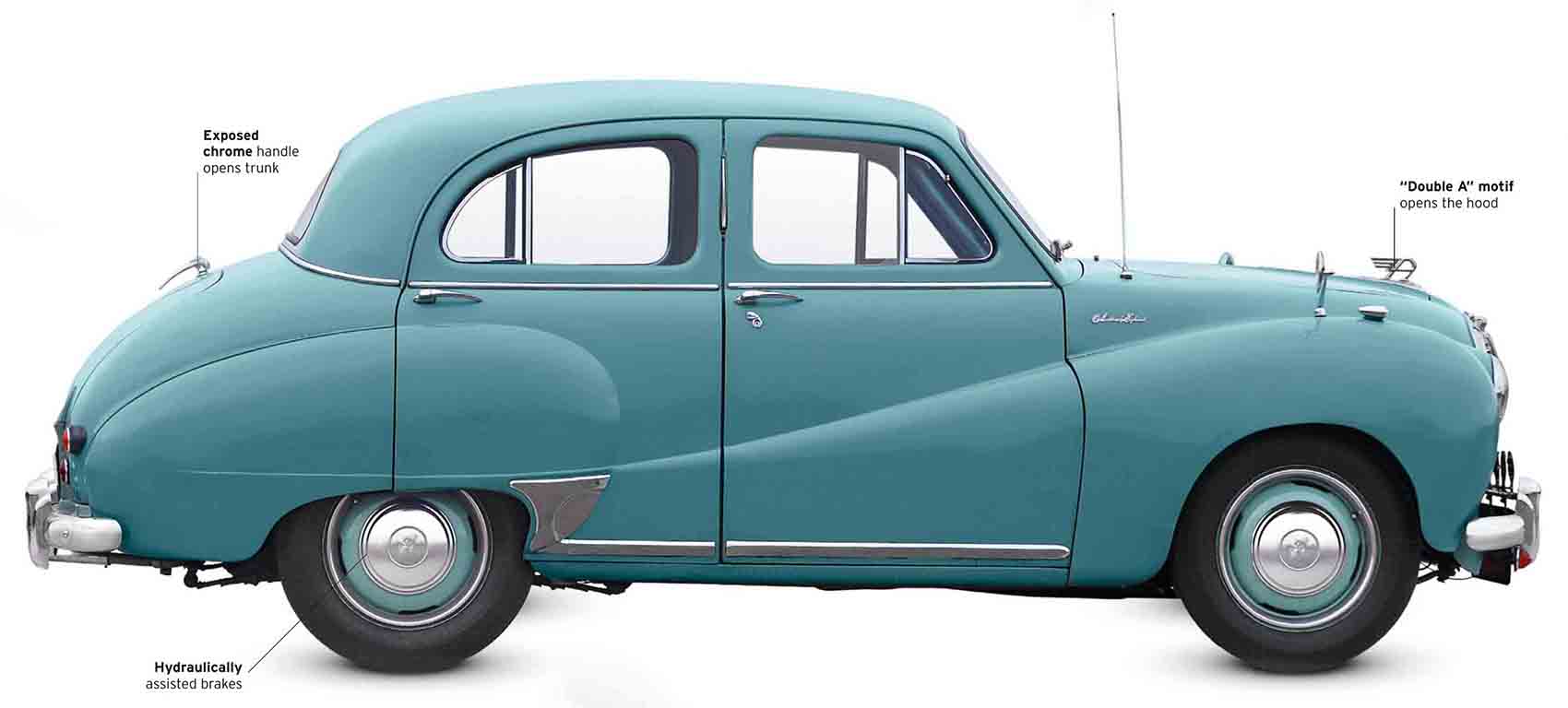
Solid Saloons
Saloon cars were the top-selling workhorses of the 1950s’ car world. In an era where hatchbacks still hadn’t really been invented, mid-sized saloon cars with separate boots and four doors—or two big doors to make getting into the back a straightforward business were in big demand. Some were solid and dependable, while others were surprisingly sporty or pioneered technical advances such as front drive and seatbelts. They were also the cars that took people to work, to the shops, or on family holidays, becoming an indispensable part of their everyday lives in the process.
Renault Fregate, 1951

| Origin | France |
| Engine | 1,977 cc, straight-four |
| Top speed | 78 mph (126 km/h) |
Nationalized after WWII, Renault needed an upmarket saloon and launched the Fregate in 1951. Although conventional looking, the Fregate had independent suspension, spacious unitary body, and handled well. The car, with its 2.0-liter engine, was slow, and sales were not as brisk as the company had hoped.
Austin A40 Somerset, 1952

| Origin | UK |
| Engine | 1,197 cc, four-cylinder |
| Top speed | 69 mph (111 km/h) |
This rounded car had flowing styling intended to appeal to American tastes. It stuck with a traditional chassis frame and was mechanically conventional. Inside there was a column gear shifter and closely-spaced front seats that could give bench-like accommodation
Kaiser Henry J., 1952

| Origin | USA |
| Engine | 2,199 cc, straight-six |
| Top speed | 87 mph (140 km/h) |
Named after company boss Henry J. Kaiser, the Henry J.’s $1,300 price was intended to attract used car buyers, but it came without armrests, glove box, and boot lids, and sales suffered. Sears department stores sold a renamed version, and the car was assembled in Israel and Japan.
Humber Hawk VI, 1954

| Origin | UK |
| Engine | 2,267 cc, straight-four |
| Top speed | 83 mph (134 km/h) |
The last of the separate-chassis Hawks was a solid, well-built, and comfortable saloon. American touches to its styling included bench seats and a column gear-change, which were typical of the era. The car had good cruising ability thanks to overdrive transmission, but its acceleration was sluggish.
Peugeot 403, 1955

| Origin | France |
| Engine | 1,468 cc, straight-four |
| Top speed | 76 mph (122 km/h) |
The Peugeot 403’s handsome body was designed by Italy’s Pininfarina, and clothed a conventional-but-rugged mechanical set-up. The car’s reliability made it popular in Africa and South America. More than 1 million saloon, estate, pick-up, and convertible 403s were sold. Fictional US TV detective Columbo drove an open one.
Wolseley 15/60, 1959

| Origin | UK |
| Engine | 1,489 cc, straight-four |
| Top speed | 77 mph (124 km/h) |
A comfortable and well-built car, the 15/60 was designed by Pininfarina, and featured clear US styling cues. The basic design was used on seven cars produced by BMC at the time, with the upmarket Wolseley version sporting leather seats and a wood-veneered dashboard.
It is a quote. The Classic Car Book – The Definitive Visual History 2016




